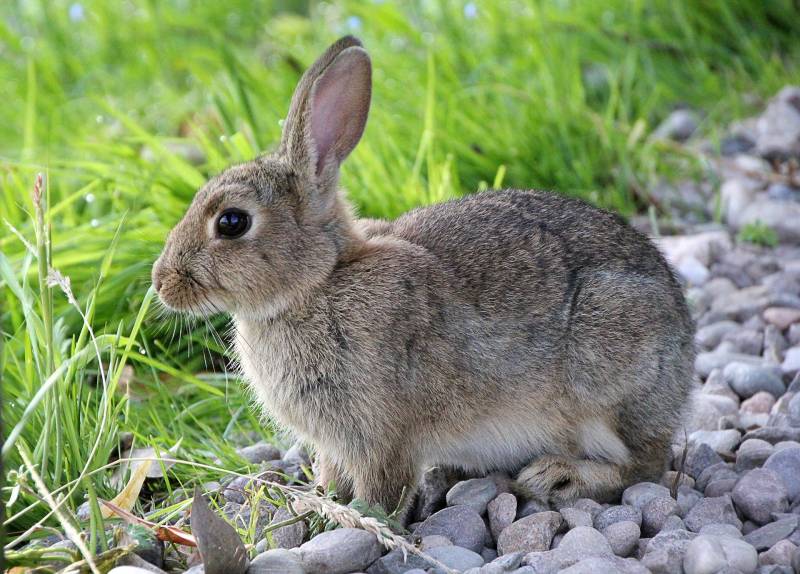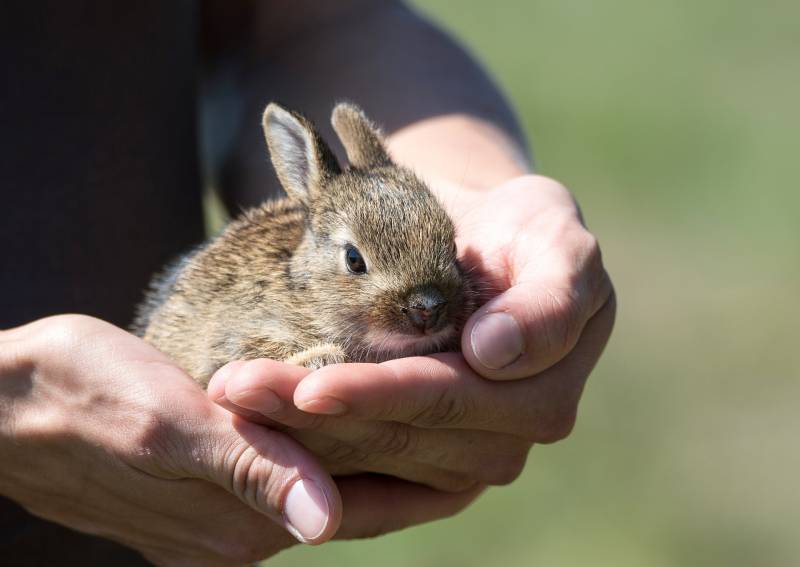Quick Navigation
Do you want to pet a rabbit but aren’t sure if you can handle constantly cleaning its poop?
Can we potty train a rabbit? Impossible!

It is a common misconception that rabbits are untidy animals.
But not everyone knows that rabbits make great companions inside our homes just like any other pets.
Though rabbits are not like any pets who naturally go to the bathroom to do some business, they can be potty trained.
Before You Start Training Your Rabbit
It is essential to know if your rabbit is spayed or neutered.
Rabbits who aren’t spayed or neutered are incredibly territorial.
Because of this, they mark their area with pee and poop to make sure other rabbits know that area is theirs.
This behavior is natural even if there is no other rabbit in the area.
The tendency of having issues during potty training is lesser if your rabbit is spayed or neutered compared to intact ones.
Rabbits that are intact are tough to potty train; some even say they can’t be even trained.
So, as an owner, you need to have a lot of patience.
Moreover, it is vital that your rabbit is spayed or neutered when the right time comes because it has many health and behavioral advantages.
In fact, spayed or neutered rabbits are more affectionate, and friendly, and pet owners can easily train them for the litter box.
However, depending on the breed, size, and health condition of the rabbit, your veterinarian may advise you to wait until the rabbit
reaches the desired age before it undergoes the procedure.
Put in mind also that it takes about a month for hormones to die down after a spay or neuter.
So, it might take a little bit of time after the procedure for them to pick up on potty training.
If you don’t know whether your rabbit is spayed or neutered, visit your veterinarian.
Talking to your veterinarian will also help you gain insights about training your rabbit.
Potty Training A Rabbit Is Easier Than You Think!
Rabbits need at least 30 hours a week to move around.
For that reason, it is a big advantage if you will potty train them.
Aside from you’ll be able to let them roam free inside the house without worrying. You will also save time by cleaning up instead of cleaning the whole cage every other day.
So, here is the step-by-step guide to potty train your rabbit.
Please bear in mind that patience is essential for successful potty training.
1) Use A Proper Litter Box
Rabbits should be housed in large boxes that can accommodate at least two of them.
Furthermore, it must have a sufficient number of high edges, as rabbits are known to shoot their pee relatively high.
Never consider using those boxes for litter being sold at pet stores, as those are way smaller.
If the litter is too small, they are less likely to use it because it does not meet their needs.
2) Use A Proper Litter
This step is essential as rabbits are quite picky.
You should never use scented pine or cedar shavings, clay litter, or clumping litter.
It is recommended to use wood stove pellets with no added accelerants or horse stall pellets.
These are perfectly safe for rabbits to use.
It has a pleasant natural scent and great absorption of its waste.
Some rabbits, however, may dislike the hard pellets beneath their feet.
In this case, a small hay layer on top of the litter is recommended.
Layering it with thin care fresh is also an excellent method to use.
This method is beneficial, especially if your rabbit is a little older, as older rabbits frequently suffer from sore hocks.
3) Put The Litter Box Underneath A Hay Rack
Rabbits usually go to the bathroom while they’re eating, and this behavior applies to every single rabbit.
So, if you’re putting the majority of the hay on top of their litter box, they must be inside to be able to eat it.
Therefore, they will end up putting their waste where they’re at.
If your rabbit has just started learning the training, it is important to take note of this.
Putting hay inside or on top of the litter box during this time is very helpful.
When the time comes that your rabbit is more trained, you can try putting hay outside of their litter box.
But, just remember that some rabbits might never be able to adapt to having hay outside of their litter box.
Even so, this only happened to some individual rabbits.
See also: My Ferret Stopped Using The Litter Box
4) Put The Litter Box In The Corner
Whichever part of the house you’re planning to put the litter box, it is best to put it in a corner.
The reason for this is that rabbit prefers to go to the bathroom in corners.
Many times, if the litter box is not provided to a rabbit, they will pick a specific corner to pee in or poop.
This behavior is just something natural for the rabbits.
Therefore, placing the litter box in the corner is a good way to help the litter training process.
If your rabbit has already chosen a specific corner or a specific place, try placing the litter box in that area.

If they have multiple areas, you may have to provide a couple of litter boxes during this time.
When you are more litter trained, you can start removing extra litter boxes.
In the meantime, they may need a couple more.
5) Keep The Area Small
Although a bigger space for rabbits is better, if you are just starting to potty train your rabbit, you may want to put them in a smaller space.
Space where they can still roam and have their playtime while litter boxes are placed in the corner, and consider the door size large enough to fit the litter box in and out of the rabbit cage.
Keeping the area small makes it easier for your rabbit to remember to use the litter box because the litter box is closer to them.
So, when they have the urge to go to the bathroom, it’s closer for them to hop in than if they were in a larger space.
Once they are litter trained, you can place them in a much larger space where they can grow and develop appropriately.
Final Thoughts
Potty training a rabbit requires tons of patience.
But once you see they successfully understand to use the litter box, it is really rewarding.
However, do not lift and force a rabbit to use the litter box.
The reason why is that it will appear negative from their perspective.
Moreover, it will cause a negative association with the litter box; hence, they will most likely try to avoid it.
Give the rabbit a treat whenever they willingly hop into the litter box to make it a more positive experience for them.
Furthermore, please be aware that some will never be 100% litter trained.
It will still vary on a rabbit’s personality.

A passionate content creator on pet behavior, nutrition choices, and health, Mike is an experienced pet expert. He has been writing on multiple websites to compensate for his passion for cats. Mike grieves around plenty of pets in his parents’ house. At the start of his career, he had a sturdy intention to be a part of pet care by any means.
With his affiliation to Purrfect n’ Pawesome, he found a way to satiate his craving to participate in pet health, wellness, and behavior analysis. He has been a significant part of our team and a major contributor in equipping our site with useful, authentic, and research-backed articles.
“I love pets as much as I love to travel to explore multiple places and lifestyles. I have been attached to this pawsome platform for many years, and my experience regarding pets has enhanced significantly by using various devices to write articles. I believe in writing my thoughts and experiences, so I try to write down the experience and learnings for my readers no matter where I am and what my mood is.”
